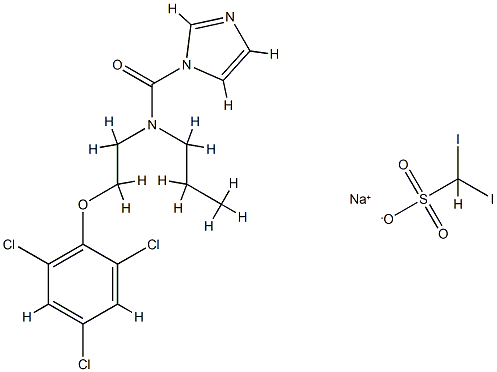Uses
Antineoplastic;
biological response modifier.
Indications
Interferon alfa-2b (Intron A) is a recombinant DNA
product derived from the interferon alfa-2b gene of human
white blood cells. Its mechanism of antitumor action
involves binding to a plasma membrane receptor
but is otherwise poorly understood. Its serum half-life is
2 to 3 hours after parenteral administration.
Brand name
Intron A (Schering);
Intron A HSA-free (Schering).
General Description
Interferon alfa-2b, Intron A, a water-soluble protein of165 amino acids and an approximate molecular mass of19,200 Da, is expressed from a recombinant strain of E. coli.This interferon molecule possesses an arginine at position23 and a histidine at position 34.Interferon alfa-2b is a broad-spectrum agent. It is indicatedfor hairy cell leukemia, condyloma acuminata (genital or venereal warts), AIDS-related Kaposi sarcoma, and chronichepatitis B and C infections.Intron A can be administered by the SC, IM, or IV routes,by infusion or by intralesional routes. The dose is 1 to 35 millionIU/day, depending on the application. The drug is suppliedas a solution or as a powder for solution, and both formscontain albumin, glycine, and sodium phosphate buffer.Hence, they should not be shaken. Vials of solution should bestored at 2°C to 8°C without freezing. The powder is stablefor 18 months at room temperature or 7 days at 45°C.
Clinical Use
Interferon alfa-2b is useful in the treatment of a rare
form of chronic leukemia, hairy cell leukemia, in which
it produces remissions in 60 to 80% of patients. However,
it has minimal antitumor activity in most human
cancers.Remissions lasting a few months have been observed
in 10 to 20% of patients with lymphomas, multiple
myeloma, melanoma, renal cell carcinoma, and
ovarian carcinoma.
Side effects
The adverse effects of interferon alfa-2b include fever
and a flulike syndrome of muscle ache, fatigue, headache,
anorexia, and nausea. Other less common side effects include
leukopenia, diarrhea, dizziness, and skin rash.
Drug interactions
Potentially hazardous interactions with other drugs
Aminophylline and theophylline: metabolism of
aminophylline and theophylline reduced, consider
reducing dose of aminophylline and theophylline
.
Antivirals: increased risk of peripheral neuropathy
with telbivudine
.
Immunosuppressants, e.g. ciclosporin, tacrolimus,
sirolimus may have an antagonistic effect.
Administration of interferon in combination with
other chemotherapeutic agents, e.g. cytarabine,
cyclophosphamide, doxorubicin may lead to
increased risk of severe toxicity.
Metabolism
Alpha-interferons are totally filtered through the
glomeruli and undergo rapid proteolytic degradation
during tubular reabsorption, rendering a negligible
reappearance of intact alfa interferon in the systemic
circulation.


